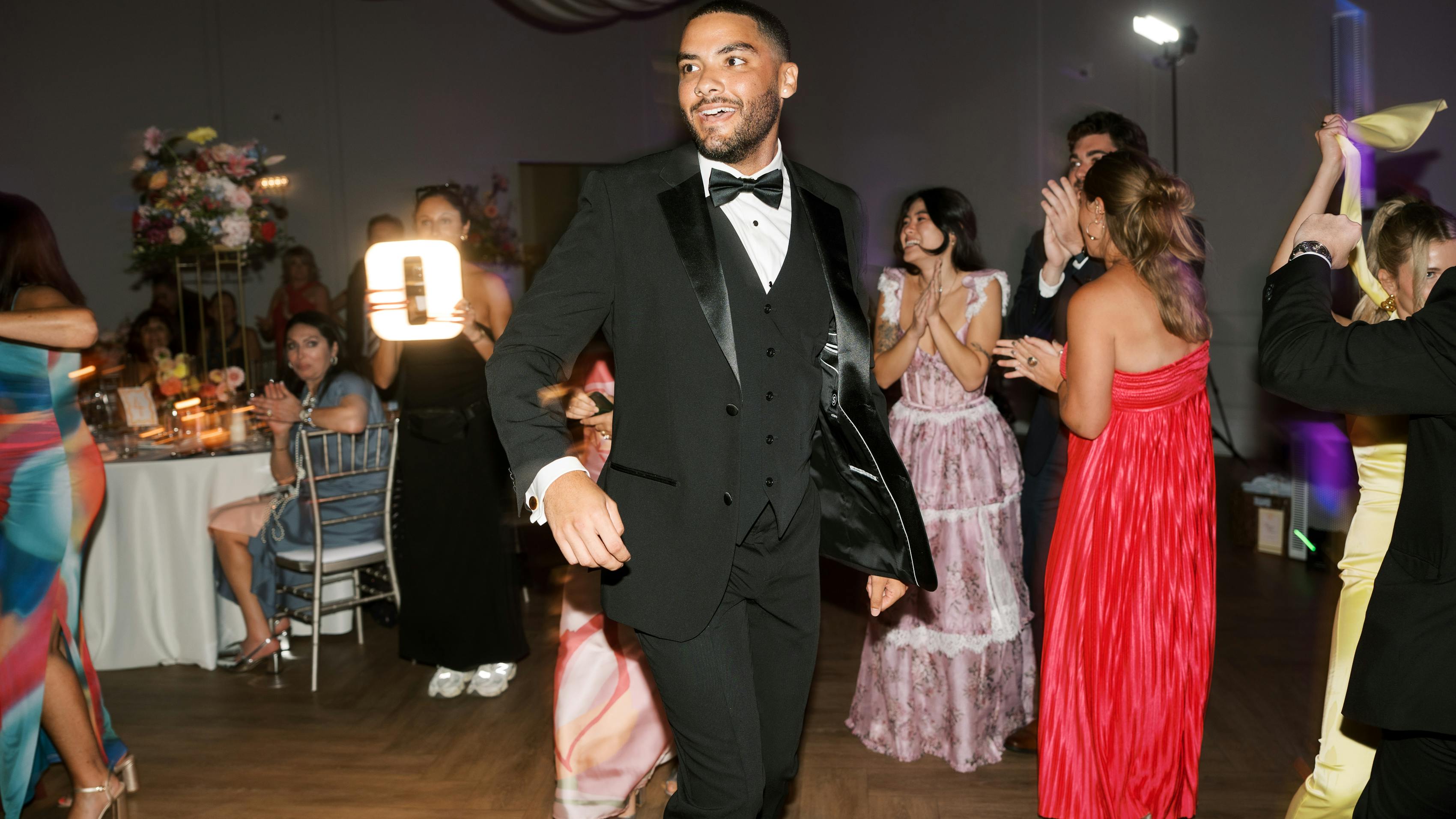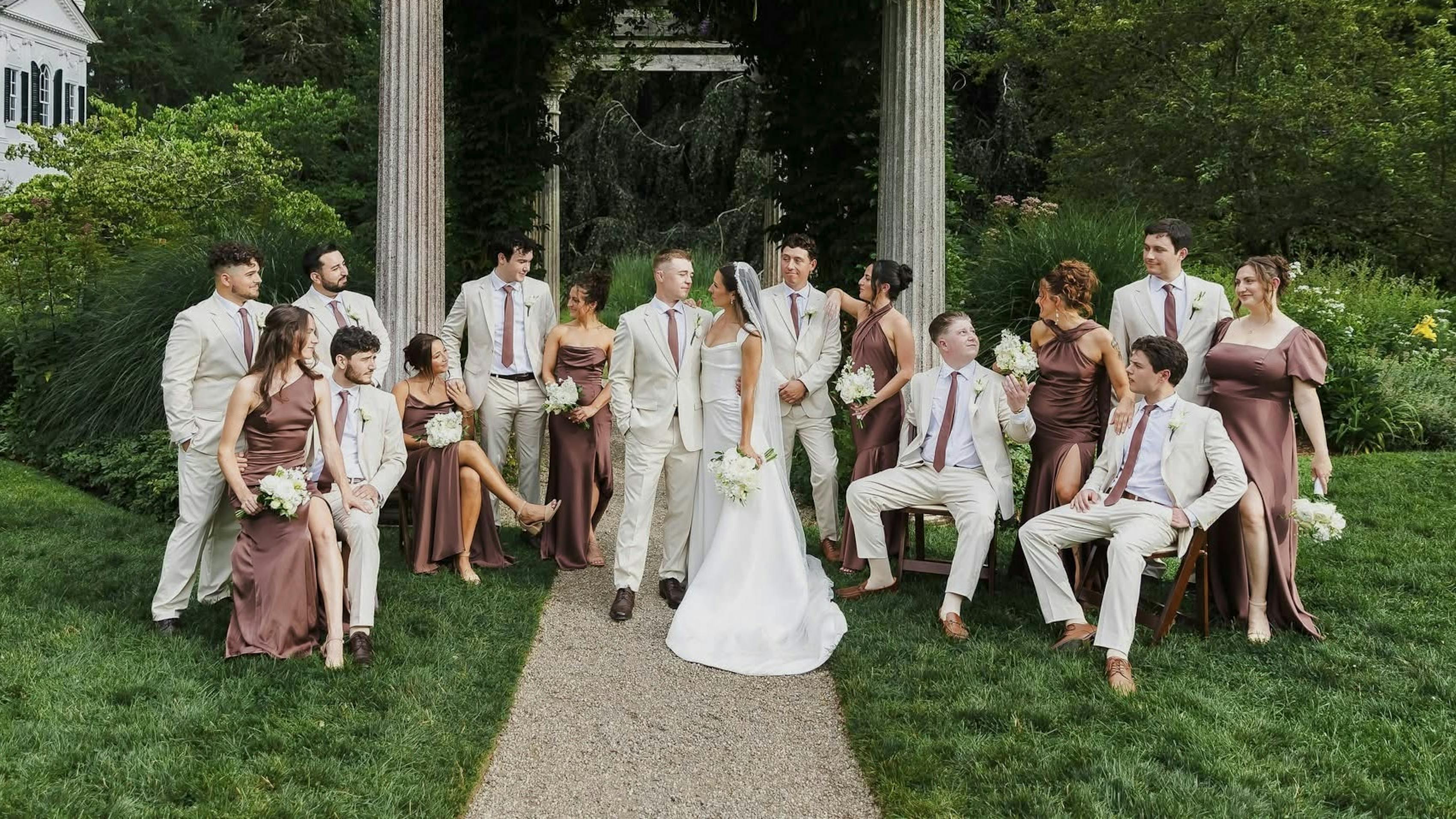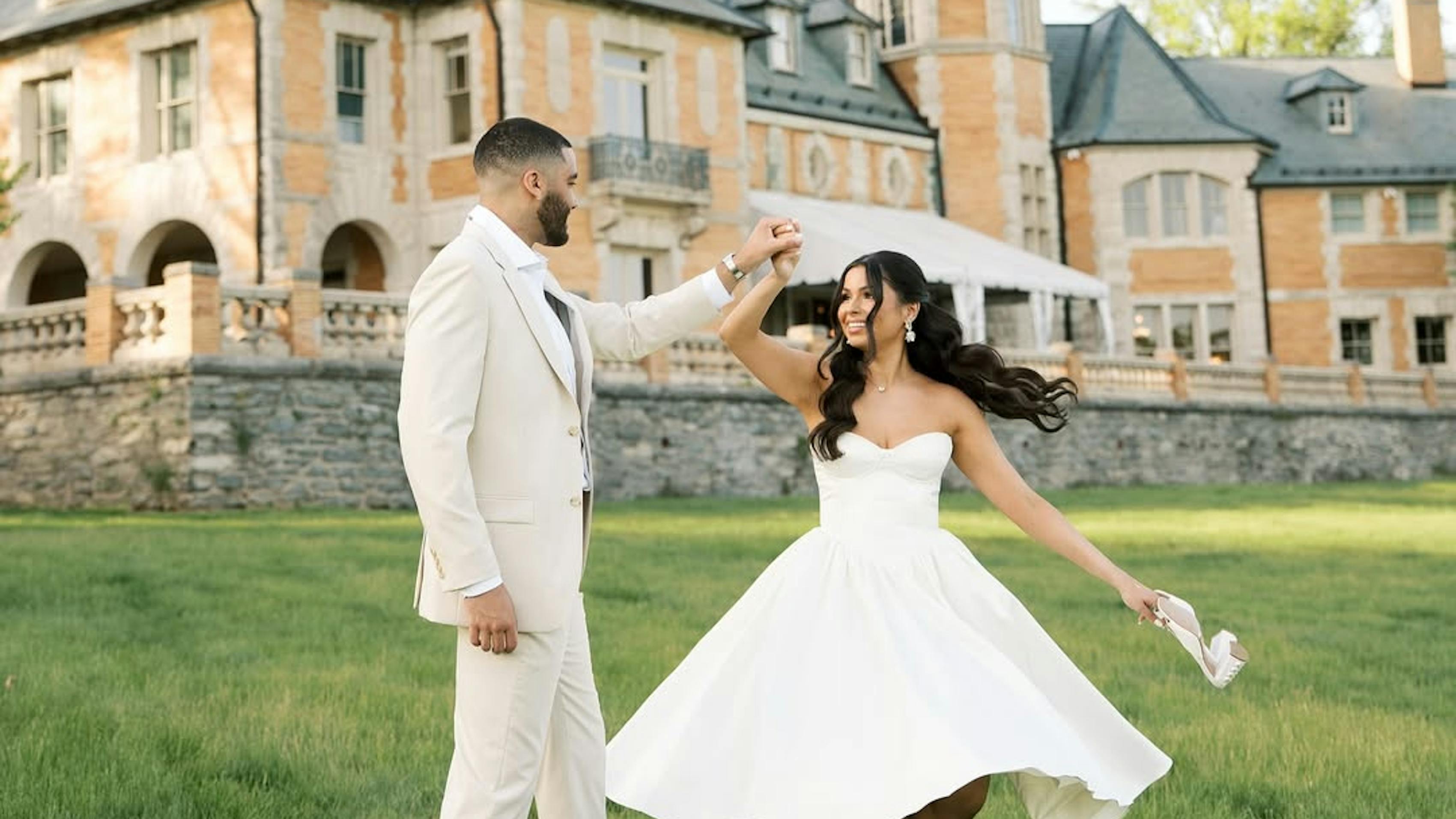What Is the Difference Between Formal and Black Tie Attire?
Published on May 19, 2024
By Lily Ertischek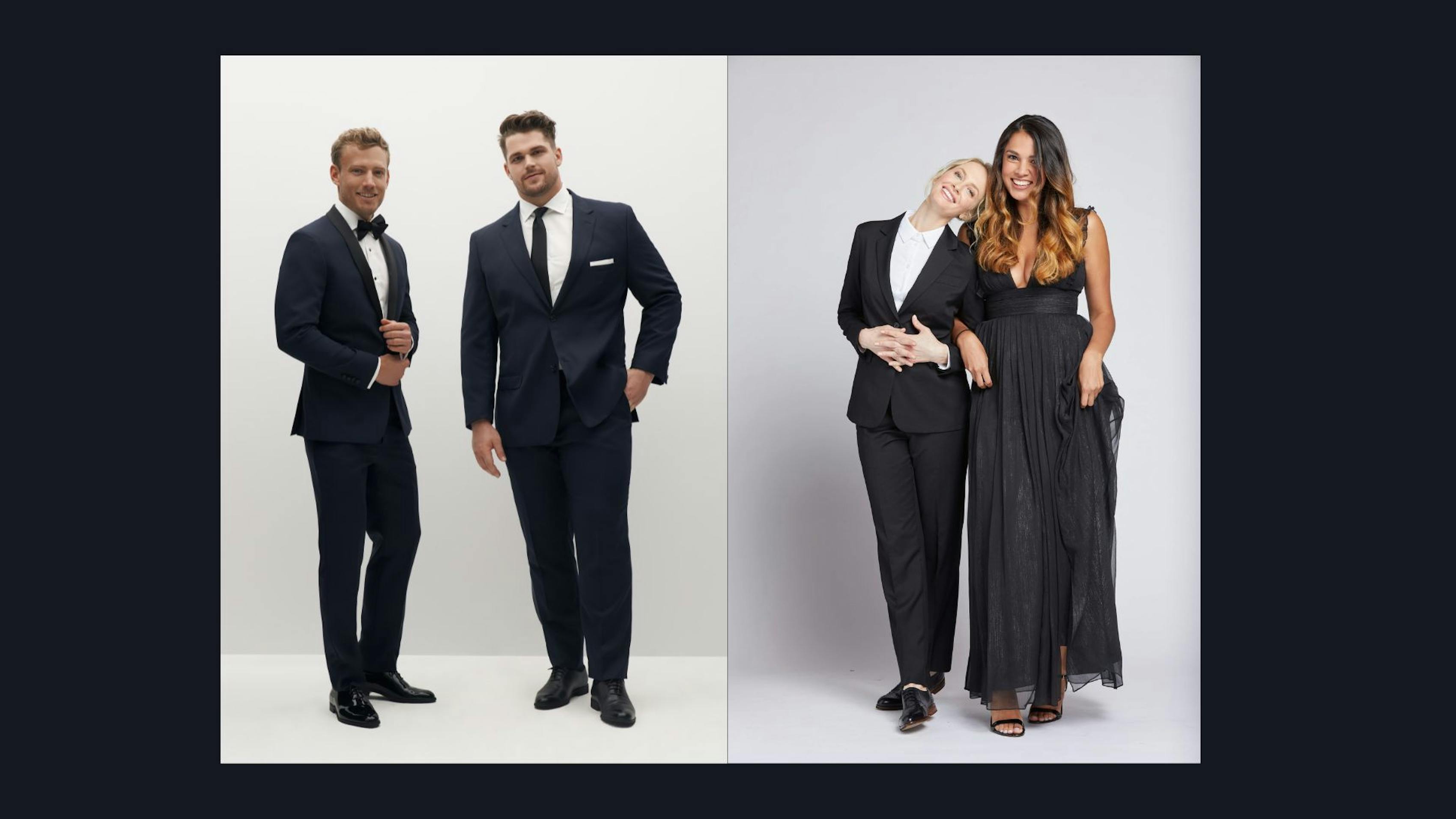
What Is the Difference Between Formal and Black-Tie Weddings?
Wedding invites often come with dress codes like "formal" and "black-tie," and while they might sound similar, they're actually quite different in practice. These terms set the tone for what to wear, so understanding the distinction between them can make a big difference in your outfit choice and ensure you dress appropriately for every wedding. Formal and black-tie weddings both signify sophistication and charm, but they've got their own style rules that make them each distinct.
We're diving in to decode the dress code differences in a way that's easy to understand. Whether you're gearing up to attend as a guest or planning your own big day, knowing the nuances between formal and black-tie attire can ensure everyone aligns with the intended event aesthetic, looks their best, and feels comfortable for any special occasion.
Key Takeaways
- Formal attire is a dress code reserved for elevated events like weddings, balls, funerals, and formal dinners, which requires a suit and tie or tuxedo for men and masculine styles or a formal dress or pantsuit for women and feminine styles.
- Black-tie attire is a dress code reserved for the most elegant events, such as black-tie weddings, galas, charity balls, operas, and fancy dinners, required a tuxedo for men and masculine styles or a ball gown for women and feminine styles.
- The primary difference in formal vs. black-tie attire lies in the level of formality: formal attire is slightly more relaxed, with the option for a suit and tie for men and formal dress for women, whereas black-tie attire is the most elevated dress code and requires a tuxedo for men and floor length gown for women.
- There are various accessories that can be added to both black-tie and formal attire, from cufflinks and pocket squares to statement earrings and necklaces.
What Is Formal Attire?
Formal attire is a common dress code for special occasions that have a focus on elegance and sophistication. These occasions include weddings, funerals, galas, balls, and formal dinners. It's a big step up from your everyday wear, but it doesn't necessarily mean you have to go full-on tuxedo mode. Formal attire strikes a balance between classic and stylish, allowing you to express your personality while still adhering to the dress code. So, whether you're donning a sharp suit or a chic gown, formal attire is all about looking your best and feeling confident for those special moments.
Men’s Formal Attire
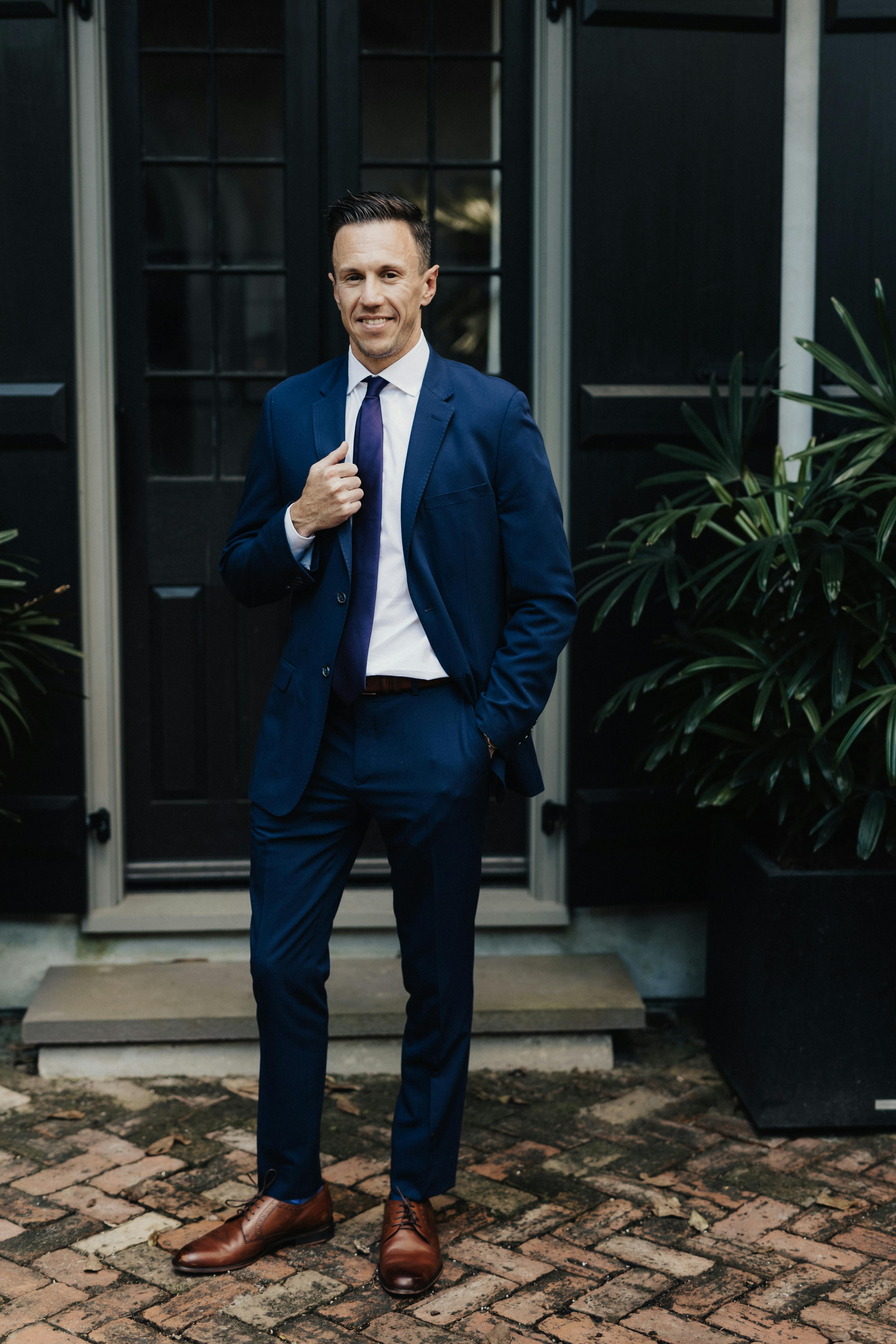
When it comes to men's formal attire, channeling that timeless elegance and sophistication is the primary goal. Think of it as your go-to ensemble for weddings and other upscale occasions where dressing to impress is a must. The key components of men's formal attire include:
- Suit: The foundation of men's formalwear, a well-tailored men’s suit is a non-negotiable. Opt for a classic black, navy, or charcoal gray suit in a traditional cut that complements your physique and exudes refinement, and ensure your suit jacket matches your dress pants or slacks.
- Dress Shirt: A crisp, white dress shirt is the perfect companion to a sharp suit. Choose a shirt with a pointed collar and long sleeves for a classic and polished look that pairs seamlessly with any suit color.
- Neckwear: Elevate your ensemble with the addition of neckwear, such as a silk tie or bowtie. Opt for classic colors or subtle patterns that complement your suit and shirt, and ensure that your tie is properly knotted for a polished appearance.
- Vest: While not always necessary, a vest can add an extra layer of sophistication to your formal attire. Choose a vest that matches your suit color and fabric for a cohesive look, and ensure that it fits snugly but comfortably.
- Footwear: Complete your ensemble with a pair of polished dress shoes in black or brown leather. Opt for styles such as Oxfords or Derbys that exude sophistication and blend naturally with your suit color.
- Accessories: Add the finishing touches to your formal look with accessories such as cufflinks, a pocket square, or a sleek watch. These subtle details can elevate your ensemble and showcase your attention to detail and personal style.
Women’s Formal Attire
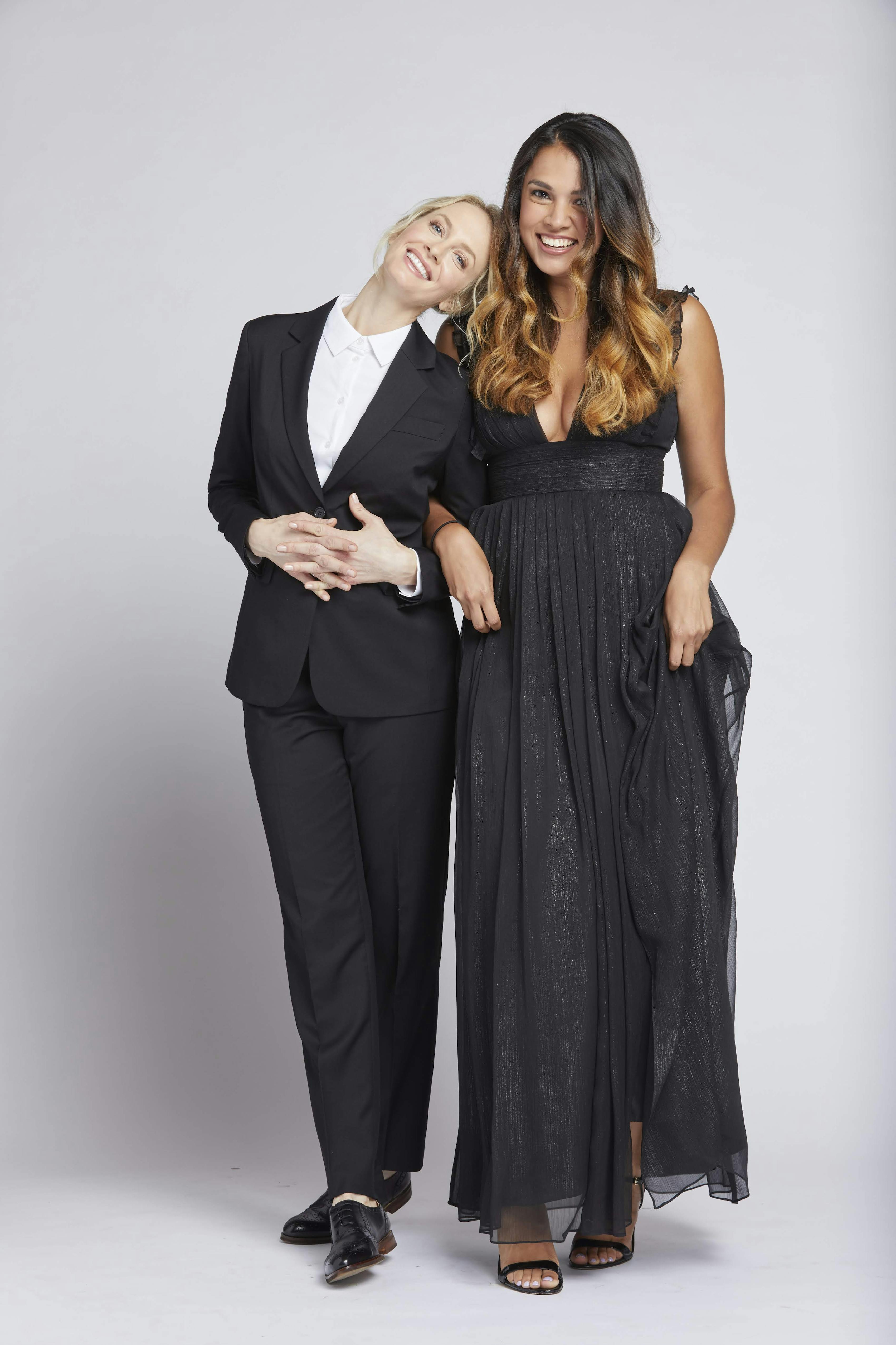
When curating women's formal attire, it's all about exuding grace and sophistication while making a stylish statement. Whether it's a wedding, gala, or elegant soirée, dressing the part is essential. Women have a range of options to choose from, each allowing for personal expression while adhering to the dress code:
- Formal Dress: A classic formal dress is a go-to choice for women attending upscale events. Opt for elegant silhouettes such as A-line or sheath dresses, typically in timeless colors like black, navy, or deep jewel tones. Ensure the dress fits well and flatters your figure, with hemlines that fall below the knee for a sophisticated look.
- Suit: For a modern twist on formal attire, women can opt for a tailored suit. Choose a well-fitted blazer and matching trousers or a skirt in classic colors like black, navy, or grey. Ensure the women’s suit is tailored to perfection, accentuating your shape while maintaining a polished appearance.
- Tops: Pair your suit or separates with a sophisticated blouse or top. Opt for tailored button-down shirts, silk blouses, or elegant camisoles in neutral colors or subtle patterns. Ensure the top complements your suit or separates and provides a polished finishing touch to your ensemble.
- Shoes: Complete your formal look with a pair of chic and comfortable shoes. Opt for closed-toe heels or flats in neutral colors like black, nude, or metallics. Ensure the shoes are polished and coordinate with the color and style of your outfit for a cohesive look.
- Accessories: Accessorizing a women's suit or dress can elevate your formal attire to the next level. Add a touch of glamor with statement jewelry, such as statement earrings or a bold necklace. Complete your look with a stylish clutch or evening bag and consider adding a sophisticated hat or fascinator for a touch of elegance. Accessorizing allows you to showcase your personal style while adding a unique flair to your formal ensemble.
What Is Black-Tie Attire?
Black-tie attire refers to one of the most elegant dress codes that’s reserved for elevated events like evening weddings, charity balls and fundraisers, operas, ballets, formal dinners, and award ceremonies. Black-tie events require a high level of refinement and elegance, and as been a staple for prestigious events for decades. For men, black-tie attire requires a well-fitted tuxedo, whereas women’s black-tie attire calls for an evening or floor-length gown. Black-tie attire is a step above formal attire, calling for sophisticated accents like satin features on tuxedos and embellishments on gowns. Below, we break down the key elements of black-tie attire for men and women and what sets this dress code apart from formalwear.
Men’s Black-Tie Attire
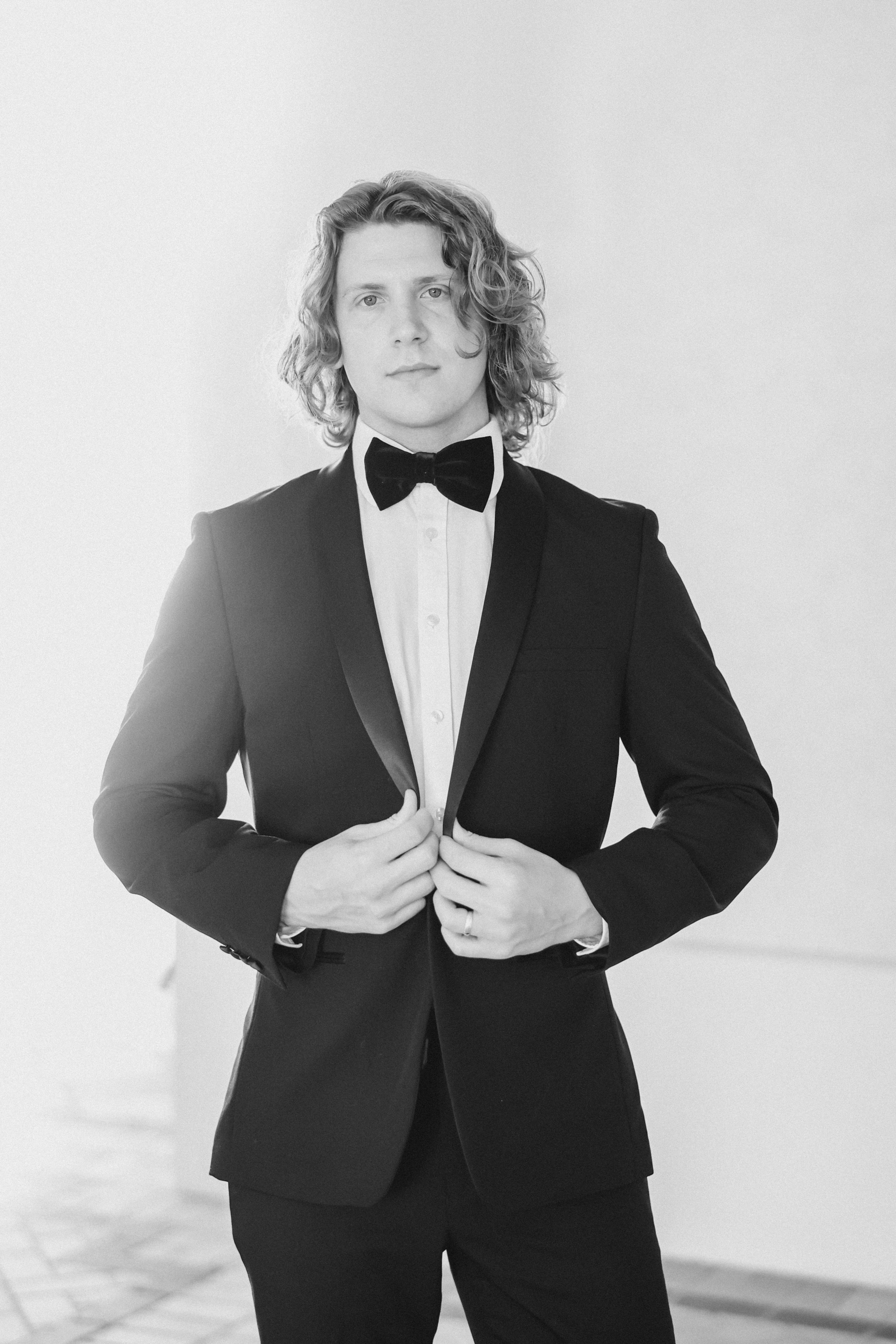
Black-tie attire typically require a full tuxedo, making it a step up from your everyday wear. This dress code is often specified for upscale events like weddings, galas, or fancy dinners. Below are the key elements for men to make a statement with your classy and sophisticated look at any black-tie affair:
- Tuxedo: The primary component of black-tie attire for men is a properly fitted tuxedo. Choose a timeless black or midnight blue jacket with satin lapels, paired with matching trousers. The fit should be impeccable, enhancing your physique and adding a touch of refinement to your look.
- White Dress Shirt: Pair your tuxedo with a crisp, white dress shirt to achieve that timeless look. Choose a shirt with a pointed or wingtip collar and French cuffs for added sophistication. Ensure the shirt is well-pressed and fits comfortably, with sleeves that extend just past the wrist.
- Bow Tie: Elevate your ensemble with a sleek and stylish bow tie. Opt for a classic black satin bow tie that complements your tuxedo jacket and adds a touch of elegance to your look. Ensure the bow tie is properly tied and sits snugly against the collar for a polished appearance.
- Vest or Cummerbund: Add an extra layer of refinement to your black-tie ensemble with a vest or cummerbund. Choose a vest in a matching fabric to your tuxedo or opt for a cummerbund in black satin for a classic touch. Ensure the vest or cummerbund fits comfortably and complements your overall look.
- Footwear: Complete your black-tie ensemble with a pair of polished dress shoes in black patent leather. Opt for styles such as Oxfords or loafers with a sleek and sophisticated silhouette. Ensure the shoes are well-polished and free from scuffs or scratches for a polished finish.
- Accessories: Complete your black-tie ensemble by adding accessories like cufflinks, a pocket square, or a stylish watch. These subtle additions elevate your look, demonstrating your attention to detail and unique sense of style, ensuring you're dressed to impress for the occasion.
Women’s Black-Tie Attire

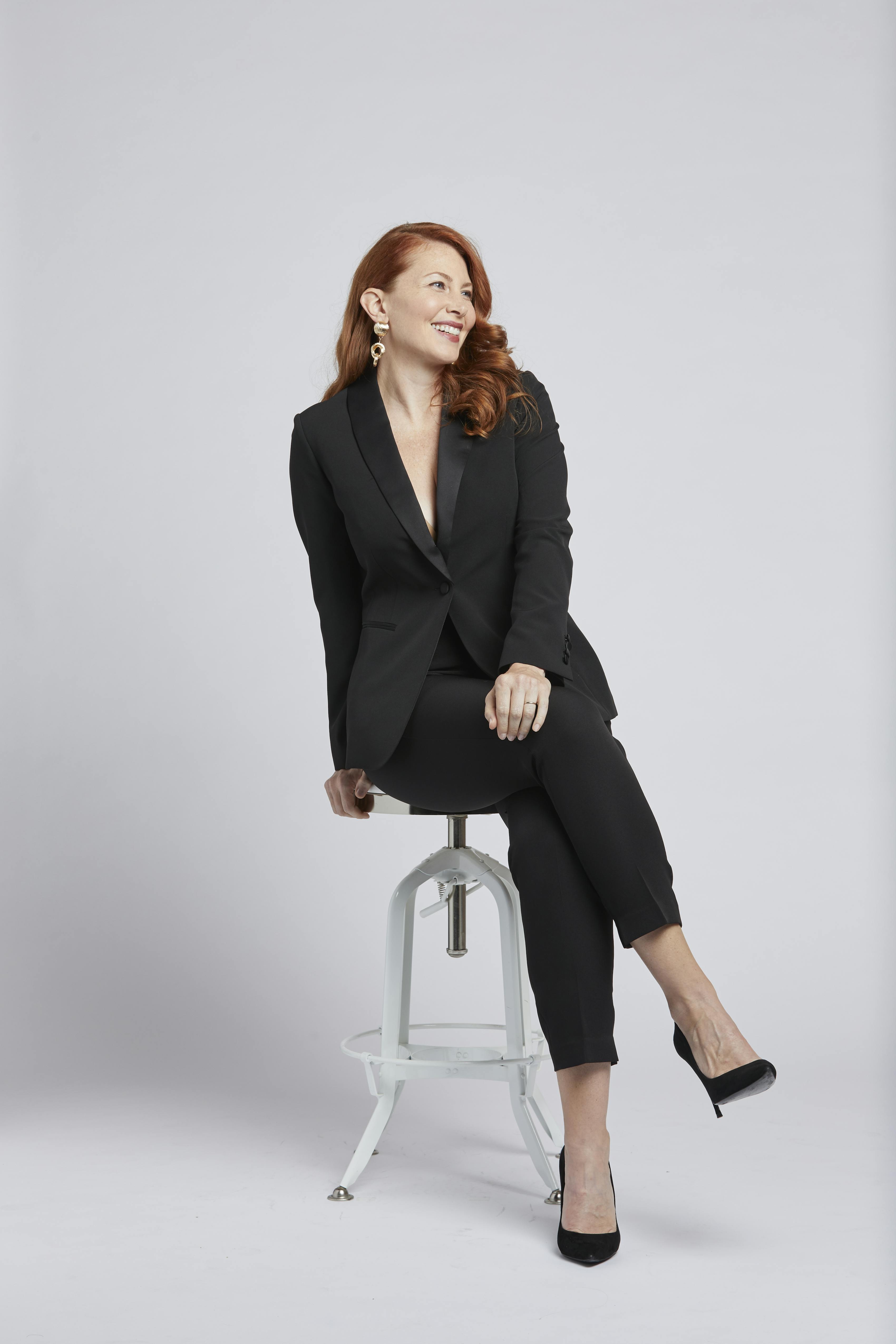
For women's black-tie attire, elegance and sophistication take center stage. Black-tie events call for dressing to the nines, and women have a range of stunning options to choose from. Here's a breakdown of the key components of women's black-tie attire:
- Evening Gown: A classic evening gown is the epitome of black-tie elegance. Choose a floor-length gown in a luxurious fabric such as satin, silk, or chiffon. Opt for timeless silhouettes like sheath, A-line, or mermaid styles, and consider details like embellishments or draping for added glamour.
- Tuxedo: For a new take on black-tie attire, women can wear a women’s tuxedo. Choose a well-fitted tuxedo jacket with satin lapels, paired with tailored trousers or a skirt. Ensure the fit is flattering and comfortable, allowing you to move with ease while exuding confidence.
- Footwear: Complete your black-tie ensemble with a pair of elegant heels or flats. Look for styles in classic colors like black, nude, or metallics, with details like embellishments or straps for added flair. Ensure the shoes are comfortable and complement the overall aesthetic of your outfit.
- Accessories: Enhance your black-tie ensemble with glamorous accessories that exude sophistication. Think about adding statement jewelry like chandelier earrings, a bold necklace, or a glittery clutch to complement your gown or tuxedo. Complete your look with a chic hairstyle and makeup that enhances your natural beauty, leaving you feeling confident and ready to dazzle at your black-tie affair.
What Is the Difference Between Black-Tie and Formal Attire?
When it comes to deciphering between black-tie and formal attire, it's about understanding the subtle nuances that set them apart. Black-tie attire is one of the most formal dress codes, typically reserved for the most upscale events where elegant attire is required. This often entails donning a tuxedo for men or an evening gown for women, complete with polished elements like satin lapels or intricate detailing.
On the other hand, formal attire leans towars a slightly less extravagant vibe, suitable for events that fall between formal and semi-formal on the dress code spectrum. Suits are a common choice for men's formal attire, while women may opt for a chic cocktail dress or tailored separates. Ultimately, the key difference between black tie vs. formal attire lies in the level of refinement and sophistication, with black-tie attire being the pinnacle of elegance and formality, while formal attire offers a more subdued yet still polished look for special occasions.
Formal vs. Black-Tie Attire FAQs
What does black-tie optional mean?
Black-tie optional is a dress code often seen on invitations to events, indicating that guests have the option to wear black-tie wedding guest attire, typically a tuxedo for men and an evening gown for women, but it's not required. Instead, guests have the flexibility to choose attire that aligns with their personal style and comfort level. This dress code is commonly used for events where hosts want to create an elegant atmosphere but also want guests to feel relaxed and comfortable.
While formal attire is encouraged for those who want to dress to the nines, guests can also opt for more semi-formal or cocktail attire, striking a balance between sophistication and ease. Ultimately, the choice is up to the individual, allowing them to dress appropriately while still feeling confident.
What events require black-tie attire?
Black-tie attire is typically expected at especially upscale events, and guests are expected to dress to impress. These occasions can include weddings, galas, charity events, ballets, operas, and high-profile awards ceremonies:
- Weddings: Weddings often opt for black-tie dress codes for evening receptions, ensuring a touch of glamor to celebrate the couple's special day.
- Galas and Charity Events: Galas and charity events often host high-profile guests and donors, creating an atmosphere of prestige that calls for formal attire.
- Ballets and Operas: Ballets and operas are cultural events where patrons enjoy performances in opulent venues, making black-tie attire part of the overall experience.
- Award Ceremonies: Lastly, high-profile award ceremonies, whether in the entertainment industry or other sectors, uphold a tradition of glamor and sophistication, with attendees dressed in their finest attire.
Essentially, any event with a fancy or elegant vibe where hosts want guests to look their best might call for black-tie attire. So, if you're headed to one of these events, it's a good idea to dust off your tuxedo or slip into that elegant gown for a night of class and sophistication.
What events require formal attire?
Formal attire is typically expected at a variety of events where guests are encouraged to dress smartly and elegantly. These occasions encompass a range of gatherings, including weddings, business events, formal dinners, parties, and more. Here's the breakdown:
- Weddings: Weddings often feature formal dress codes for both daytime and evening celebrations, ensuring guests look their best to celebrate the couple's special day.
- Business events: Business events, such as conferences, seminars, or networking gatherings, often call for formal attire to convey professionalism and respect for the occasion.
- Formal dinners: Formal dinners, whether hosted at restaurants or private venues, provide an opportunity for guests to enjoy a refined dining experience while dressed in sophisticated attire.
- Parties: Parties, including cocktail parties, holiday gatherings, or special celebrations, may also specify formal dress codes to create a sense of elegance and style.
The versatility of formal attire lies in its ability to adapt to various settings and occasions, allowing guests to exude confidence and sophistication regardless of the event they attend. Whether it's a wedding, business event, formal dinner, or party, dressing formally ensures guests look polished and put-together, ready to make a lasting impression.
Can you wear a suit to a black-tie event?
While it's not ideal, wearing a suit to a black-tie event is generally not recommended. Black-tie dress codes typically call for tuxedos or formal eveningwear for men. However, if a suit must be worn, opt for a well-fitted one in a darker hue, such as black or dark navy, to maintain a semblance of formality. Always refer to the event's dress code to ensure you're appropriately dressed for the occasion.
Tying It Together: Black-Tie vs. Formal Attire
Understanding the nuances between black-tie and formal attire is essential for dressing appropriately for upscale events. While black-tie events call for tuxedos and evening gowns, formal attire offers a slightly more relaxed yet still polished option for various occasions. At SuitShop, we offer a wide range of black-tie and formalwear options for both men and women, ensuring you look your best for any special event. Our Fit Finder and Fit Guide are valuable resources to help you find the perfect outfit that not only fits impeccably but also exudes confidence and style. So, whether you're attending a gala, wedding, or business event, SuitShop has you covered with the finest selection of formal attire to suit your needs.

Lily Ertischek
Lily is constantly reading, keeping up with the latest TV, and seeking out the best bites. She lives in New York City.
